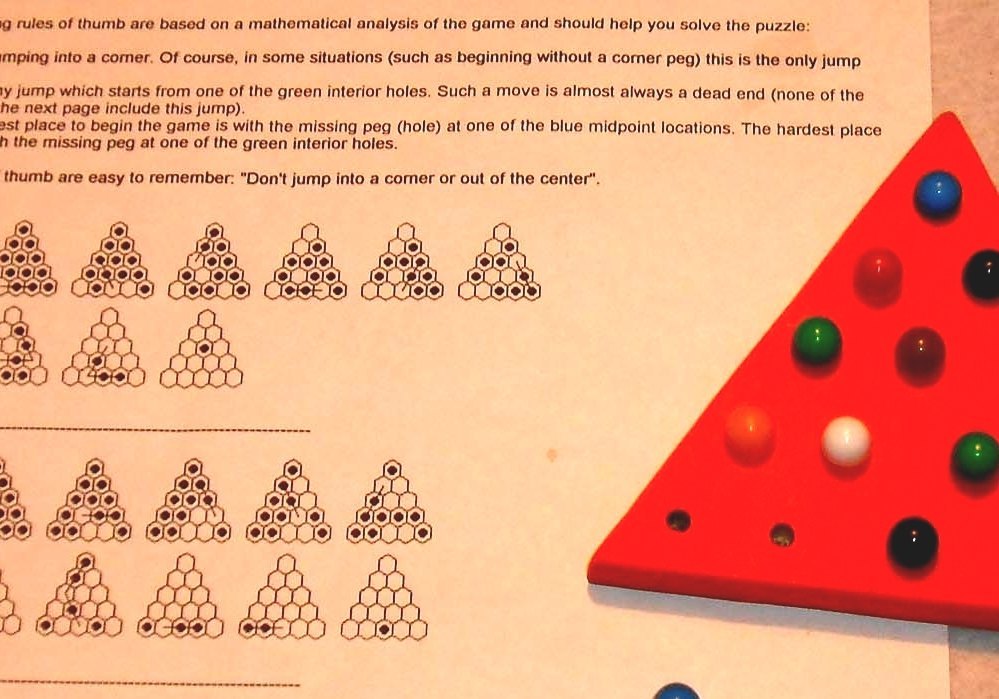

#32 hole peg solitaire fastest solution code#
Given a Java class which can represent a position and which is capable to compute a list of all resulting positions after one move, the solver is a simple recursive function ( source code as zip ): This algorithm is implemented in the source directory for both the English and European boards. You get different results for different starting positions, see Dan O’Briens Puzzle Solution Page for some more information on the topic. the loop will only finish if none of the possible jumps led to a solution, so return indicating we did not find one. So the board could look like this after one move: xĪ solution is found when there is only one peg left, wherever it is located on the board. The leapfrogged peg is removed from the board. A legal move is a jump over one peg in one of the six different directions. The middle peg of the third row is empty. A board with edge length 5 (n = 5) before any move has been done looks like this: x Lets start with a more precise definition of the problem. It consists of a board with 33 holes, arranged in the shape of a cross - a 3×3 square with four 2×3 rectangles added to its sides. You may be surprised to find other techniques are much more efficient for these problems. Standard Peg Solitaire, sometimes sold as Hi-Q, is the classic and most common version of the game. The problem to solve is: How many different solutions exist for a board with n pegs on a side? The focus is on different optimization techniques, not only the Fork/Join framework. Chinese checkers, halma, peg jumping puzzle, peg solitaire. In this article, I use a simple board game as an example for a parallel algorithm and other optimization techniques, a variant of peg solitaire. In 1971, Octave Levenspiel found a solution in 27 moves we demonstrate that no shorter.

Even modern smartphones often have four cores. To utilize these modern beasts, you need parallel programming. You set up the game by placing the 32 marbles or pegs in the dents or holes of the board, leaving the extra hole in the center empty. On the other hand, the number of cores increases: Laptops with eight cores are common (okay, including hyperthreading, only four real cores). You should now have two groups of pegs, with 5 pegs on the left side and 3 on the right. In 1974 in college, I wrote a Fortran program to try and solve the problem, but the mainframe was not fast enough to find a solution. This is a C++ computer program that finds the solution to the game using an exhaustive search. Move the peg in position 7 to position 2, jumping position 4. Hi-Q is a peg board game that you jump over pegs and remove them. In the last few years there has been nearly no improvement in single thread performance of CPUs. As you'll see, the next set of moves will divide the pegs into two groups, one on each side of the triangle.


 0 kommentar(er)
0 kommentar(er)
